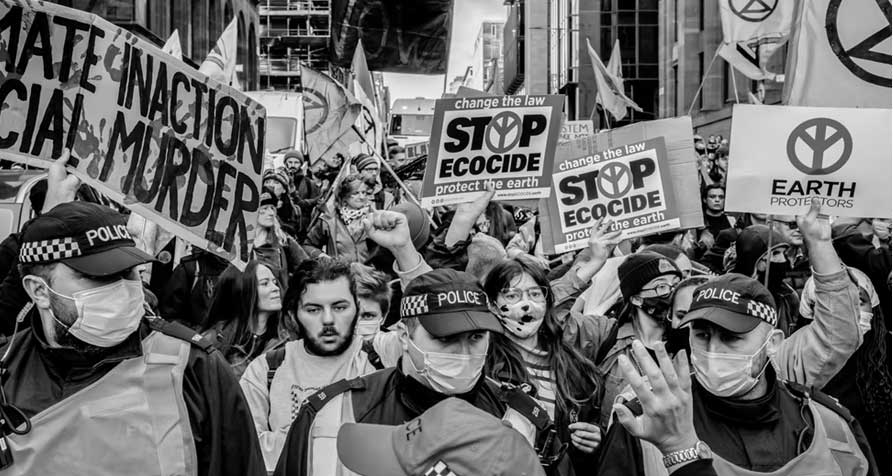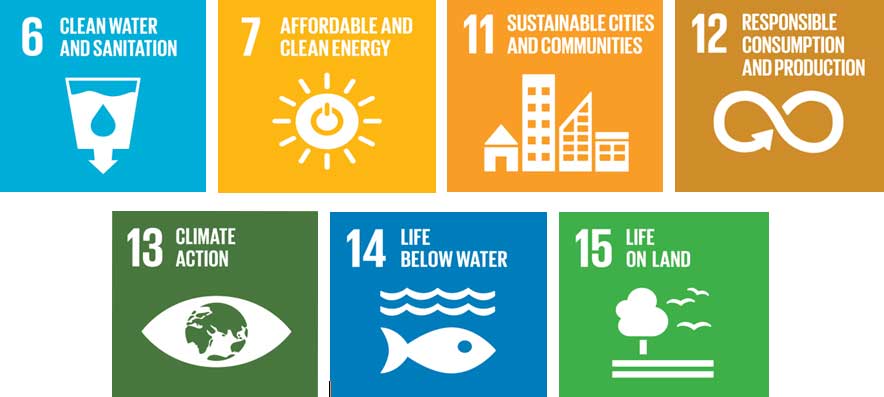“The environment is where we all meet; where all have a mutual interest; it is the one thing all of us share.”
– Lady Bird Johnson
Earth Day is an annual celebration of the environmental movement’s accomplishments and raising awareness of the significance of long-term ecological sustainability. “Every year on April 22, Earth Day marks the anniversary of the birth of the modern environmental movement in 1970.” The year 2022 marks the 52nd anniversary of the birth of the movement. Although the significance of Earth Day has evolved over the years in one way or another, it has done so in a positive way. We all have a diverse perspective of Earth Day.




ORIGINS OF EARTH DAY
Americans were consuming large amounts of leaded gas through massive and inefficient automobiles in the decades leading up to the first Earth Day. Industry belched out smoke and sludge with no concern for legal or public repercussions. Air pollution was widely regarded as a sign of prosperity. Until now, the majority of Americans were mostly unaware of environmental problems and the dangers that a contaminated environment poses to human health. Started as a grassroots movement, Earth Day created public support for the creation of the Environmental Protection Agency (EPA) and contributed to the passage of the Clean Air Act, the Water Quality Improvement Act, the Endangered Species Act, and several other environmental laws. The idea for Earth Day was proposed by then Senator Gaylord Nelson of Wisconsin. The first Earth Day took place on April 22, 1970, a monumental day that is widely credited for launching the modern environmental movement. 20 million Americans from all walks of life participated in the very first Earth Day. Twenty years later, Earth Day went global, mobilizing 200 million people in 141 countries and lifting environmental issues onto the world stage. With the release of Rachel Carson’s New York Times bestseller Silent Spring in 1962, however, the stage was set for change. The book was a landmark moment for public understanding and concern for living organisms, the environment, and the irreconcilable links between pollution and public health. The first Earth Day on April 22, 1970, was a national “teach-in” event focused on educating people about the environment. Earth Day 1970 gave voice to this emerging environmental consciousness, and put environmental concerns on the front page.
EARTH DAY GOES WORLDWIDE
The first Earth Day had a massive impact then and it continues to have a significant effect till date. As a result, Earth Day is now widely acknowledged as the world’s largest secular celebration, with over a billion individuals engaging each year as a day of action to improve human behavior and implement global, national, and local policy reforms. Several worldwide agreements, treaties, environmental laws & acts, conventions, forums, strikes, campaigns and varied attempts have been undertaken to safeguard our planet but as the effects of climate change become more evident day after day, the battle for a clean environment is becoming increasingly alarming, citizens from all across the world are standing up to claim noticeably greater action on behalf of our planet and its residents.


The social and cultural contexts that erupted in 1970 are resurfacing now, with a new generation of disgruntled millennials refusing to accept platitudes and instead coming to the streets in droves to demand a different path ahead. Social media platforms are exposing these debates, rallies, strikes, and mobilizations to a worldwide audience, unifying a concerned citizenry like never before and spurring generations to band together to confront humanity’s greatest challenge.
- “I have learned you are never too small to make a difference.” – Greta Thunberg
- “The good man is the friend of all living things.” – Mahatma Gandhi
- “It’s Earth day. I wonder if we can plant more trees than people for a change?” – Stanley Victor Paskavich

MOTHER EARTH DAY
Environmental activists have been urging governments to limit greenhouse gas emissions for the past 30 years in order to avert catastrophic climate change.The Earth’s average surface temperature has increased by about 1.8°F (1.0°C) since the late 1800s. In Accordance to the COP26 Summit that took place in Glasgow in 2021, all world leaders pledged to zero carbon emissions by 2050 so that the rising global temperature can be tackled. According to the United Nations, the world has fewer than 12 years to cut greenhouse gas emissions in half, a huge challenge that would need an absolute transformation of the global economy. Regardless of the fact that the effects of climate change are becoming more severe with each passing year such as more frequent floods and storms, submergent coastlines, wildfires reaching new extremes, and droughts drying up crucial water sources, fossil fuel consumption keeps increasing. With the advancement of time it can be seen that there is a relationship between gender inequalities and environmental degradation, where loss of biodiversity, ecosystems, and climate change tend to exacerbate existing gender inequalities, placing women and girls in a vulnerable position where their livelihoods, assets, and health are affected. As activists draw attention to the shadow pandemic of violence against women, they’re also considering the impact of environmental damage on women and communities, as well as the potential for future pandemics. Women, who make up the majority of the world’s poor, are typically more reliant on natural resources, positioning them on the front lines of climate change and making them prominent figures in the movement. Women are crucial change agents in their communities, helping to enhance environmental resilience and mitigate and combat environmental degradation and climate change. In terms of conservation and climate action, women generally have different knowledge of the social and environmental setting and support environmental initiatives associated with various sectors differently, which promotes the sustainability and effectiveness of nature-based solutions to the world’s biodiversity and climate crisis.
Many of the Sustainable Development Goals (SDGs) of the United Nations are closely aligned with the goals of Earth Day . It might be a great approach to get people interested in the SDGs, especially those that are concerned with sustainability, like goals 6, 7, 11, 12, 13, 14, and 15. These objectives look at clean water, clean energy, sustainable communities, responsible consumption, climate action, protecting bodies of water, and caring for everything on land, several of which are ideally aligned with Earth Day’s purpose and mission.


Image: Sustainable Development Goals
SDGS educates us to be more engaged with our planet and to conserve its resources. “Invest in Our Earth” is the theme for Earth Day 2022, which encourages us to invest in the planet by ensuring that we conserve its finite resources by conserving water, reducing waste, investing in renewable energy, and ensuring that we breathe clean air.
Women have a more in-depth knowledge of environmental damage and are so ideally positioned to combat its repercussions. The best associated phrase one can think to describe this is that of Ecofeminism, which is not a modern phrase but it may be for a certain amount of people. It refers to a branch of feminism that sees environmentalism, and the relationship between women and the earth, as foundational to its analysis and practice. Ecofeminist thinkers draw on the concept of gender to analyze the relationships between humans and the natural world. To understand the impact of environmental destruction, we can consider Ecofeminism, as a philosophy that emerged in the 1980s among women from the anti-nuclear, environmental, and feminist groups. It is apparent that environmentalism and feminism are both prominent, contemporary topics that should not be overlooked, and that gender debates should be integrated into discussions about environmental restoration. Ecofeminism sees a critical connection between the two, as both have been caused by a result of patriarchy and wants to say more than just that women are more affected by environmental damage. To build on the premise that women have a distinct perspective on environmental action, it is critical to understand where it originates from. To do so, one must first admit that women are more affected by climate change than males. ‘In Kenya, women are the first victims of environmental degradation, since they are the ones who walk for hours seeking for water, bring firewood, and provide food for their family,’ says ecological feminist Wangari Maathai. Climate change makes all of these endeavors more difficult.’ Furthermore, there are parallels between women’s subjugation and humanity’s oppressive dominance over nature. Examining the confluence of these two concerns can assist to understand women’s different insight as well as women’s capacity to bring about an ecological revolution.
The Chipko movement in India secured a success in 1980 when Indira Gandhi, the country’s then-leader, declared a fifteen-year restriction on felling trees in the Himalayan highlands until the green cover was completely restored. One of Chipko’s most notable characteristics was the widespread participation of female villagers in the conflict. Women were particularly positioned to comprehend the difficulties as the backbone of Uttarakhand’s agrarian economy, since they were the most affected by the widespread deforestation. This felling harmed woman adversely by increasing the amount of time women spent collecting firewood. As a result, it hindered women’s capacity to sustain family economies that relied on trees for food and domestic items, while also reducing chances for women to make income-generating wood products. They had the most in-depth knowledge of the subject caused by environmental degradation and deforestation, making them more powerful and effective advocates.


Image: Chipko Tree Huggers of the Himalayas-1994
Indeed, successful women-led environmental movements, such as Kenya’s Green Belt Movement and the Chipko Movement, demonstrate this. This in no way validates men’s exclusion from the climate change debate, but it does place some responsibility on women to liberate themselves and the environment, and for ecofeminism to be taken seriously as a genuinely productive approach to explaining what needs to be changed and how to change it.
Lastly, A famous saying by Dr. Vandana Shiva
“In nature’s economy the currency is not money, it is life.”
*Dr. Vandana Shiva is an Indian scholar, environmental activist, food sovereignty advocate, ecofeminist and anti-globalisation author.





